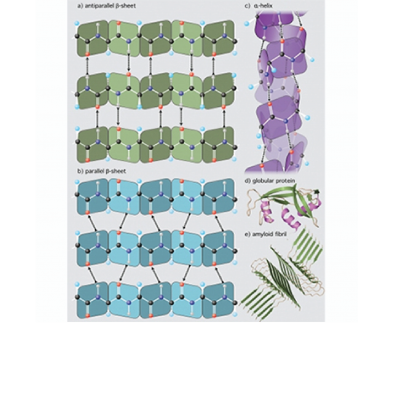
Life as we know it requires three basic types of polymers: polypeptide, polynucleotide, and polysaccharide. The Williams lab has evaluated both universalities and idiosyncratic characteristics of these biopolymers. We have incorporated this information into a model that explains much about biopolymer origins, selection and early evolution. We observe that all three biopolymer types are pre-organized, conditionally self-complementary, chemically unstable in aqueous media yet persistent because of kinetic trapping, with chiral monomers and directional chains. All three biopolymers are synthesized by dehydration reactions that are catalyzed by molecular motors driven by hydrolysis of phosphorylated nucleosides. All three biopolymers can access specific states that protect against hydrolysis. These protected states are folded, using self-complementary interactions among recurrent folding elements within a given biopolymer, or assembled, in associations between the same or different biopolymer types. Self-association in a hydrolytic environment achieves self-preservation. Heterogeneous association achieves mutualism-based partner-preservation. These universalities support a model in which life’s polymers emerged simultaneously and co-evolved in a common hydrolytic milieu where molecular persistence depended on folding and assembly. We believe that an understanding of the structure, function and origins of any given type of biopolymer requires the context of other biopolymers.
Runnels, C.M., Lanier, K.A., Williams, J.K. et al. Folding, Assembly, and Persistence: The Essential Nature and Origins of Biopolymers. J Mol Evol 86, 598–610 (2018). https://doi.org/10.1007/s00239-018-9876-2
